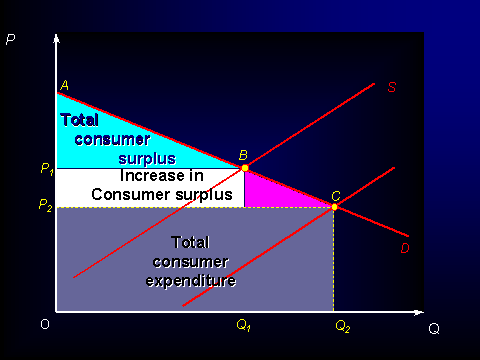 Willingness
to pay
Willingness
to payWhat are the factors and does one's wealth determine value
or
the commercial, financial, and monetary worth of anything?
Masai villagers of the Serengeti; these men think of cattle as their indicator of status.
|
Land X Labor = Wealth
Location
Opportunity costs
Externalities
Life Cycle Accounting
Apprehension
Scarcity
|
"We have always known that heedless self-interest was bad morals; we know now that it is bad economics."
Franklin Delano Roosevelt, FDR, commentary on the stock market crash and its effects after 1929.
![]()
Labor Theory of value suggests that the time it takes to produce something determines it's market worth, or commercial quality.
Terminology.
marginal utility
Jevons, William Stanley (1835-1882), a British economist, was one of the first to formulate the economic theory of marginal utility. Utility meaning of service, or usefulness, of some beneficial value.
In this theory, price is related to scarcity as well as to practical value.
Marginal Utility is an example of complexity in markets that makes several points.
First, the consumer's decision is not an all-or-nothing one. Instead, it is a decision to buy or not to buy just one more unit. That means it is a mistake to look at the total utility of the two goods as the basis for demand. The total utility is irrelevant to the decision to buy or not to buy one more unit of the good. What is relevant to any decision is what is gained or lost depending on how the decision is made; and only a part of the total utility is gained or lost as a result of the decision to buy, or not to buy, one more unit of the good. Economists call the part of utility that is gained or lost (in the decision to buy one more unit) the marginal utility.
So we should not look at the total utility but at the "marginal" utility of the good or service. Marginal utility is defined as the increase in utility as a result of consuming one more unit of the good.
In other -- algebraic -- terms:
MU = U/Q dU/dQ
It is a given that the marginal utility for each good decreases as the consumption of the good increases. Put otherwise, the more we consume, the less an additional purchase adds to our total utility. For example, the more water we consume, the less an additional unit or article purchased adds to our total utility. *
The utility of each good increases as we consumer more of it, but the utility increases at a decreasing rate. The marginal utility is that rate.
The "Law of Diminishing Marginal Utility" states that for any good or service, the marginal utility of that good or service decreases as the quantity of the good increases, ceteris paribus (all else being equal or unchanged).
In other words, total utility increases more and more slowly as the quantity consumed increases.
marginal cost
noun Economics
the cost added by producing one extra item of a product.
Jevons's books include Lessons in Logic (1870), Theory of Political Economy (1871), Money and the Mechanism of Exchange (1875).
William S. Jevons was born in Liverpool, England, on Sept. 1, 1835. He was educated at University College, London, where he later held the post of professor of political economy. He died on August 13, 1882.
The marginal utility of water in an arid region and during the growing season just before harvest, or in a drought will vary, depending on the evaporation rate and the hydration demands of the crop being produced.
This is "diminishing returns" from the viewpoint of the consumer, and is a general principle of economics. There might be a threshold before the principle applies. For example, the marginal utility of golf clubs might increase until you have a fairly full set. But beyond some threshold, marginal utility will diminish with increasing consumption of any good.
opportunity cost
noun, used in Economics
the loss of potential gain from other alternatives when one alternative is chosen :
idle cash balances represent an opportunity cost in terms of lost interest.
We can think of this in terms of opportunity cost. The opportunity cost of a dollar spent on water is the utility that dollar would have obtained if it had been spent on any other good or service. The person will keep increasing his spending on water as long as the marginal utility per dollar spent on burgers is greater than the opportunity cost.
So what has cost, utility, diminishing returns and opportunity have to do with willingness to pay?
Swedish authors suggest that: "A basic finding is that income tends to influence willingness to pay positively and significantly. . . . Environmental improvements thus tend to be relatively more beneficial to low-income
groups."
Elasticity of demand and willingness to pay for environmental services in Sweden*
by
Stina Hökbya and Tore Söderqvist
21 March 2001
US forestry case:
Loomis, John B.; González-Cabán, Armando; Gregory, Robin. 1996.A contingent valuation study of the value of reducing fire hazards to old-growth forests in the Pacific Northwest, Research Paper PSW-RP-229-Web. Albany, CA: Pacific Southwest Research Station, Forest Service, U.S. Department of Agriculture; 24 p.
A contingent valuation methodology was applied to old-growth forests and critical habitat units for the Northern Spotted Owl in Oregon to estimate the economic value to the public in knowing that rare and unique ecosystems will be protected from fire for current and future generations. Generalizing to the whole state, the total annual willingness-to-pay of Oregon residents ranges from $49.6 to $99 million. In terms of old-growth forests protected from fire, the value is $28 per acre.
Many authorities, based on economic studies try to suggest the public's desire to protect the wildlife, watershed, or ecological conditions of their surroundings is comparable to a consumer's willingness to pay for services, or consumer goods. They insist that any commodity can be compared to the variety of public goods using a market to contrast the demand for services or consumption and the capacity of a resource to produce a thing worth having, or using.
 Willingness to pay is related to the concept of consumer surplus measures the welfare that consumers derive from their consumption of goods and services, or the benefits they derive from the exchange of goods. Consumer surplus is the difference between what consumers are willing to pay for a good or service (indicated by the position of the demand curve) and what they actually pay (the market price).
Willingness to pay is related to the concept of consumer surplus measures the welfare that consumers derive from their consumption of goods and services, or the benefits they derive from the exchange of goods. Consumer surplus is the difference between what consumers are willing to pay for a good or service (indicated by the position of the demand curve) and what they actually pay (the market price).
The level of consumer surplus is shown by the area under the demand curve and above the ruling market price, or P1 and P2.
Above graphic and explanatory details courtesy of: http://www.revisionguru.co.uk/economics/consumer.htm
Do you think that comparing natural values to the consumer's "willingness to pay" is a sound argument, or merely an approximation of the actual situation? How approximate?
See internet search
U.K. based, self-styled 'Guru' on economics and business.
BBC poll on "willingness to pay" with respect to "green taxes."
![]()
Past lessons: Island Designs | Borders | Coasts | Coastal Habitats | Ecological Design | Course Index
![]()
![]()